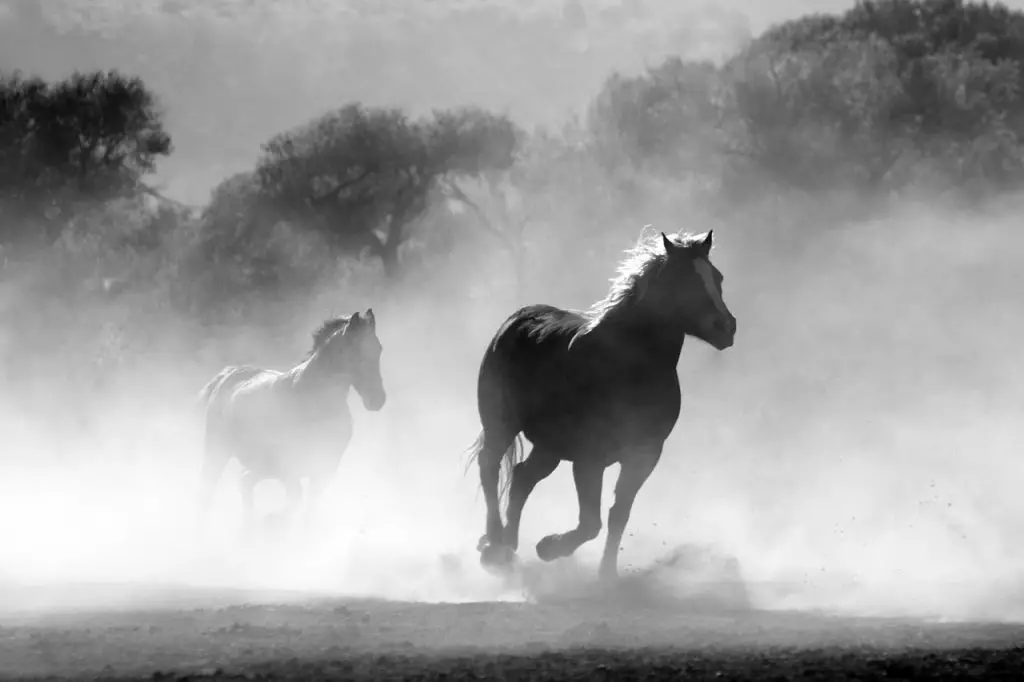Equine athletes have long been admired for their impressive physical abilities, capturing the imagination of people for centuries. From the speed and agility of thoroughbred racehorses to the endurance and stamina of long-distance riding horses, these animals are capable of remarkable feats.
But just how far and fast can horses run, and what factors contribute to their performance? In this article, we will delve into the world of equine athleticism, exploring the limits of their physical capabilities and the science behind their impressive performances.
As we explore the power of equine athletes, we will delve into the different types of horse gaits, from the slow and steady walk to the lightning-fast gallop. We will also explore the distances that horses can race and the challenges of endurance riding.
Through this exploration, we will gain a deeper understanding of what makes these animals such remarkable athletes and the factors that contribute to their incredible performances.
So, join us as we embark on a journey to unleash the power of equine athletes and discover just how far and fast horses can run.

Types of Horse Gaits
While a well-conditioned horse can gallop for 2-2.5 miles before fatigue sets in, it is important to note that horses have various gaits that can be used for longer distances and endurance rides.
The trot is the most efficient gait for a horse, averaging around 8 mph. This gait involves diagonal pairs of legs moving together, creating a two-beat rhythm. While it may not be the fastest gait, it is sustainable for longer periods, making it an ideal choice for covering longer distances.
The canter is a steady, three-beat gait that clocks in at around 10-17 mph. This gait is a bit faster than the trot and can be used for longer distances as well. However, it can be more strenuous on a horse’s body, as it requires a greater level of coordination and balance.
Overall, horses are incredibly versatile animals, and their various gaits allow them to cover a range of distances at different speeds, making them valuable athletes in many different disciplines.
Horse Racing Distances
Thoroughbred racing involves horses racing distances measured in furlongs. The most common race distances are 5, 6, 7, 8, and 10 furlongs, with longer races being less common.
The Kentucky Derby, one of the most prestigious races in the world, is a 1.25-mile (10 furlongs) race for three-year-old Thoroughbreds.
To prepare for these races, Thoroughbreds undergo rigorous training techniques that include interval training, hill workouts, and speed work. They also need to be conditioned to run on different track surfaces, such as dirt, turf, and synthetic tracks.
The type of surface can affect how fast a horse can run, as well as the risk of injury. Trainers must carefully balance their horses’ training and conditioning to ensure they perform at their best on race day.
Endurance and Long-Distance Riding
Endurance riding tests the stamina and fitness of horses and riders over long distances, showcasing the remarkable resilience and endurance of these majestic animals. The sport involves covering distances of up to 100 miles in a day with regular breaks, and it is dominated by Arabians due to their natural endurance.
To compete in endurance riding, horses must undergo rigorous training techniques that focus on building their cardiovascular and muscular endurance. This includes long-distance conditioning rides, hill work, and interval training. Riders must also have a deep understanding of horse nutrition and hydration to ensure their horses are properly fueled and hydrated throughout the event.
To participate in endurance riding, riders and horses require specialized equipment. Horses need to wear protective boots and shoes to prevent injury and provide traction on different terrains. They also require well-fitted saddles and saddle pads that distribute weight evenly and prevent chafing. Riders must wear helmets and protective vests to minimize the risk of injury in the event of a fall.
Additionally, riders need to carry food, water, and first aid supplies for both themselves and their horses, as well as GPS or other navigation devices to ensure they stay on course. With proper training and equipment, horses and riders can successfully complete endurance rides and showcase the incredible endurance and resilience of these remarkable animals.
Frequently Asked Questions
What are some common health concerns for horses that participate in endurance riding?
Endurance riding can lead to health concerns such as dehydration, electrolyte imbalances, and muscle fatigue. Prevention measures include proper conditioning, hydration plans, and rest breaks. Treatment options may include IV fluids, anti-inflammatory medication, and massage therapy.
How do different surfaces and terrains affect a horse’s performance and endurance?
Different surfaces and terrains affect a horse’s performance and endurance. Training techniques and nutritional requirements are important to prepare horses for these challenges. For example, horses running on turf have a 3% faster time than on dirt.
Can horses that are not specifically bred for racing still compete in Thoroughbred races?
While Thoroughbreds are specifically bred for racing, horses of alternative breeds can compete in Thoroughbred races if they meet certain criteria and are trained using Thoroughbred-specific training techniques to prepare them for the demands of racing.
How do trainers and riders ensure that their horses are well-rested and in top shape before a race or competition?
Trainers and riders use pre-race preparation techniques to ensure their horses are well-rested and in top shape. Recovery techniques are also employed to help horses recover from the race and prevent injuries.
Are there any non-competitive activities or sports that can help improve a horse’s speed and endurance?
Horse training techniques such as interval training and hill work can improve a horse’s speed and endurance. Equine nutrition tips, such as feeding high-quality hay and adding supplements, can also enhance a horse’s athletic performance.
